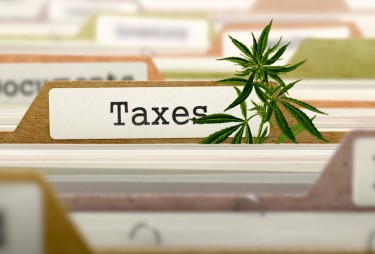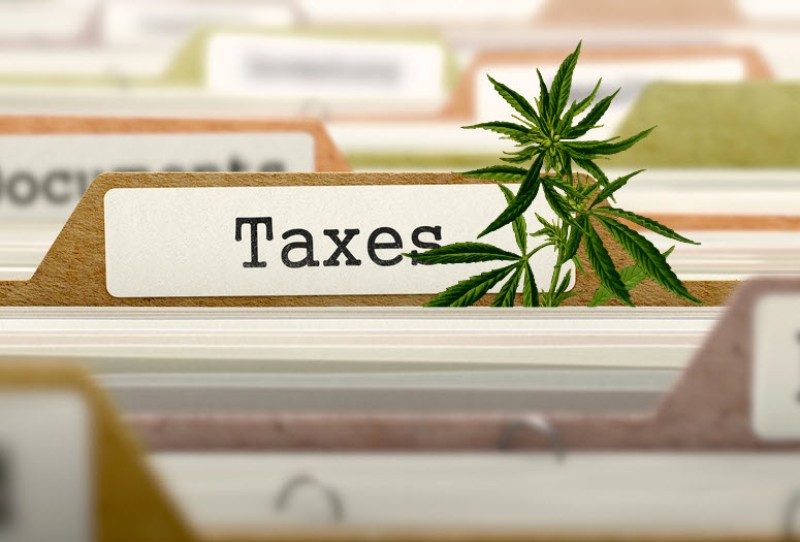
The legalization of cannabis has transformed the economic landscape of many states across the United States. New federal data reveals that since 2021, states have collectively collected over $8.7 billion in marijuana taxes. This figure not only highlights the financial potential of legalized cannabis but also reflects changing public attitudes toward marijuana use and its regulation. As more states embrace legalization, understanding the implications of this revenue generation becomes crucial for policymakers, businesses, and communities alike.
The Landscape of Cannabis Legalization in the U.S.
The journey toward cannabis legalization in the United States has been long and complex. Cannabis was criminalized in the early 20th century, with the Marihuana Tax Act of 1937 effectively prohibiting its use and distribution. However, attitudes began to shift in the late 20th century, with California becoming the first state to legalize medical marijuana in 1996.
The momentum continued to build, culminating in Colorado and Washington becoming the first states to legalize recreational marijuana in 2012. Since then, a wave of legalization has swept across the nation, with 21 states and the District of Columbia now allowing recreational use.
Current Legal Status of cannabis legalization in the U.S
As of September 2024, a total of 21 states have legalized recreational marijuana, while a dozen more permit medical use. The regulatory frameworks vary significantly from state to state, influencing tax structures, sales practices, and usage regulations. Some states have opted for high taxes on cannabis sales as a means to generate revenue, while others have focused on creating a more accessible market for consumers.
Tax Revenue Breakdown
Overview of Revenue Generation
According to recent federal data, states have amassed over $8.7 billion in marijuana tax revenue since 2021. This revenue comes from various sources, including excise taxes, sales taxes, and licensing fees imposed on cannabis businesses. The breakdown of this revenue is essential for understanding how different states are capitalizing on legalization.
-
Excise Taxes: These are taxes imposed directly on the sale of cannabis products. States like California and Colorado have implemented excise taxes that can range from 15% to 30%, depending on local regulations.
-
Sales Taxes: In addition to excise taxes, many states impose standard sales taxes on cannabis purchases. This can further increase the overall tax burden on consumers but also boosts state revenues.
-
Licensing Fees: States also collect significant revenue through licensing fees charged to cannabis growers, manufacturers, and retailers. These fees can be substantial and contribute to the overall financial picture.
State Contributions
California: The Leader
California remains at the forefront of marijuana tax revenue generation. Since legalizing recreational cannabis in January 2018, the state has collected over $3 billion in taxes alone. The state's complex tax structure includes a 15% excise tax on retail sales and additional local taxes that can vary widely by municipality.
The revenue generated has been earmarked for various public services:
-
Education: A significant portion of California's cannabis tax revenue is allocated to public schools through programs designed to improve education funding.
-
Public Health: Funds are also directed toward public health initiatives aimed at educating residents about responsible cannabis use.
Colorado: A Model for Success
Colorado was one of the first states to legalize recreational marijuana and has since become a model for other states looking to implement similar legislation. Since legalization, Colorado has generated over $2 billion in tax revenue from cannabis sales.
The state's tax structure includes a 15% excise tax on wholesale transactions and a 2.9% state sales tax that applies to all retail sales. Local jurisdictions can impose additional taxes as well.
Colorado has utilized its cannabis tax revenue for various purposes:
-
School Construction: A portion of the funds goes directly into school construction projects throughout the state.
-
Substance Abuse Programs: The state allocates funds for substance abuse prevention programs aimed at reducing addiction rates among residents.
Illinois: Rapid Growth
Illinois is another state that has seen rapid growth in marijuana tax revenue since legalizing recreational use in January 2020. In just over three years, Illinois has collected more than $1 billion in cannabis taxes.
The state imposes a tiered excise tax based on THC content:
-
Low THC Products: Products with lower THC levels face lower excise taxes.
-
High THC Products: Higher THC products incur steeper taxes, which can reach up to 25%.
Illinois has directed its cannabis revenue toward social equity programs aimed at addressing historical injustices related to drug enforcement policies.
Economic Impact Beyond Tax Revenue
-
Job Creation
Legalizing marijuana has led to substantial job growth across various sectors. As of early 2024, nearly 15,000 cannabis dispensaries operate in the U.S., employing an estimated 93,000 workers. This includes roles in cultivation, processing, distribution, and retail. Additionally, the industry stimulates job creation in ancillary sectors like software development, accounting, and construction. The cannabis sector is projected to grow further, potentially increasing legal cannabis jobs by 250% over the next decade.
-
Business Opportunities
The burgeoning cannabis industry presents numerous business opportunities for entrepreneurs. The market has attracted significant investment, leading to the establishment of various businesses ranging from cultivation facilities to dispensaries and ancillary services. In 2022, consumers spent approximately $30 billion on legal marijuana products, surpassing expenditures on chocolate and craft beer. This consumer spending not only benefits cannabis businesses but also generates substantial tax revenue for states.
-
Local Economic Impact
Cannabis tax revenue often supports local communities by funding essential services. For instance, Colorado has allocated millions from cannabis taxes toward education and homelessness services. This redistribution of wealth enhances community welfare and infrastructure.
-
Reduction in Law Enforcement Costs
Legalization also reduces the costs associated with enforcing drug laws. States can reallocate funds previously used for law enforcement to other community programs, further amplifying the positive economic impacts.
Long-term Economic Growth
As the cannabis industry matures, it is expected to contribute significantly to overall economic growth. Projections indicate that the total economic impact of the cannabis industry could reach nearly $150 billion by 2026, underscoring its potential as a major economic driver in the U.S.
Community Benefits
Beyond economic metrics, communities are experiencing benefits from legalized marijuana:
-
Reduced Crime Rates: Some studies suggest that legalization may lead to reductions in certain types of crime associated with illegal drug trade.
-
Public Health Initiatives: Revenue generated from cannabis taxes often supports public health initiatives aimed at education and harm reduction.
Challenges Ahead
Despite the positive economic impacts associated with marijuana legalization, several challenges remain:
-
Federal Regulations
One significant hurdle is the ongoing federal prohibition of marijuana. While many states have legalized its use, cannabis remains classified as a Schedule I substance under federal law. This creates complications for banking and taxation:
-
Banking Access: Many cannabis businesses struggle to access traditional banking services due to federal regulations.
-
Tax Deductions: Cannabis businesses cannot take standard business deductions under federal law, leading to higher effective tax rates compared to other industries.
-
Social Equity Concerns
As states continue to generate substantial revenues from legalized marijuana, there is growing concern about social equity:
-
Historical Injustices: Communities disproportionately affected by past drug enforcement policies are often left out of the economic benefits generated by legalization.
-
Access Barriers: High startup costs and regulatory hurdles can prevent marginalized communities from entering the legal market.
-
Market Saturation
As more states legalize marijuana and existing markets expand, there is potential for market saturation:
-
Price Volatility: Increased competition may lead to price drops that could impact profitability for existing businesses.
-
Quality Control: With rapid growth comes challenges related to quality control and product safety standards.
Prospective Developments
-
Continued Growth in Tax Revenue
As more states legalize recreational marijuana, tax revenues are expected to continue rising. With 37 states and Washington, D.C., having legalized some form of cannabis by 2024, the potential for increased tax revenue is significant. Experts estimate that nationwide legalization could generate up to $8.5 billion annually for all states. This growth will likely be driven by expanding markets and consumer acceptance, as well as the introduction of new products and services within the cannabis industry.
-
Evolving Tax Structures
States are experimenting with various tax structures to optimize revenue while ensuring competitiveness against the illicit market. The adoption of potency-based taxation—taxing products based on THC content—has emerged as a trend in states like New York, Illinois, and Connecticut. This approach aims to create a more equitable tax system that can adapt to market changes and consumer preferences. However, states must remain cautious about overtaxing, which can drive consumers back to illegal markets.
-
Allocation of Revenue
The allocation of marijuana tax revenue will continue to be a critical issue. Many states have earmarked funds for essential services such as education, public health initiatives, and infrastructure improvements. For instance, Colorado has directed substantial portions of its cannabis tax revenue toward school construction and behavioral health programs. As revenues grow, states may face pressure to diversify spending or address social equity issues related to past drug enforcement practices.
-
Market Maturation and Price Dynamics
As the cannabis market matures, prices may stabilize or decline due to increased competition and efficiency in production. This maturation could result in fluctuating tax revenues as consumer behavior adjusts. States that have seen significant price drops—like Colorado, where prices fell by 60% from 2014 to 2023—may experience challenges in maintaining consistent revenue streams. Policymakers will need to adapt their strategies accordingly.
-
Federal Legalization Considerations
The ongoing conversation about federal legalization could dramatically impact state revenues. If cannabis were legalized at the federal level, it would open up interstate commerce opportunities and allow cannabis businesses access to traditional banking services. This change could lead to an influx of investment and further stimulate job creation within the industry.
-
Social Equity Initiatives
As states continue to collect substantial tax revenues from marijuana sales, there is growing recognition of the need for social equity initiatives. Many advocates argue that a portion of tax revenue should be directed toward communities disproportionately affected by past drug policies. Future developments may include programs aimed at providing grants for minority-owned businesses within the cannabis sector or funding for substance abuse treatment programs.
.
Conclusion
The collection of over $8.7 billion in marijuana taxes since 2021 demonstrates not only the financial viability of legalized cannabis but also its potential impact on public services and community development. As more states navigate their paths toward legalization and regulation, it will be crucial for policymakers to address challenges related to equity, access, and federal regulations.
With continued advocacy for reform at both state and federal levels, along with innovative approaches to taxation and regulation, the future looks promising for both consumers and businesses within this burgeoning industry. As society continues adapting its views on cannabis use, understanding these dynamics will be essential for maximizing benefits while minimizing challenges associated with this rapidly evolving sector.






